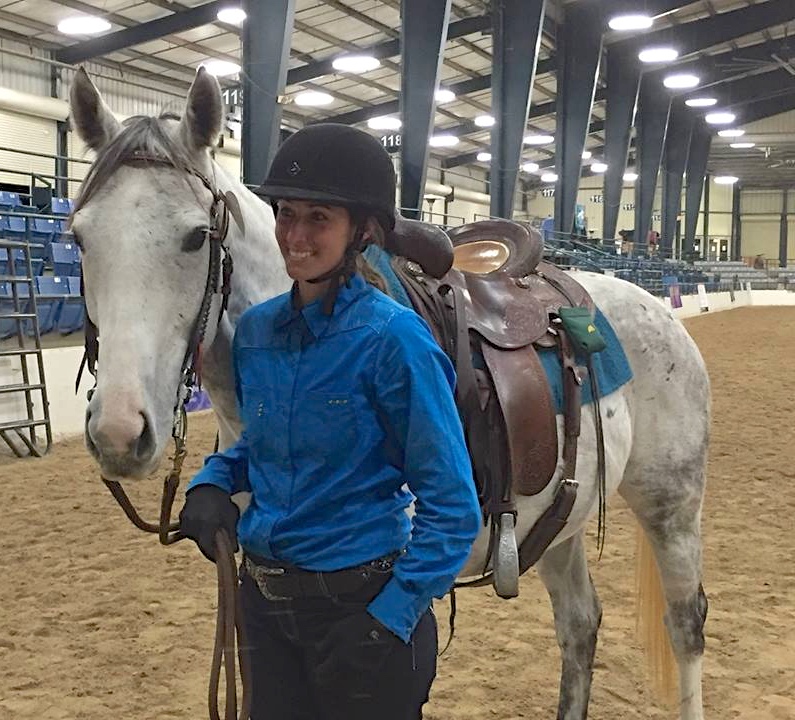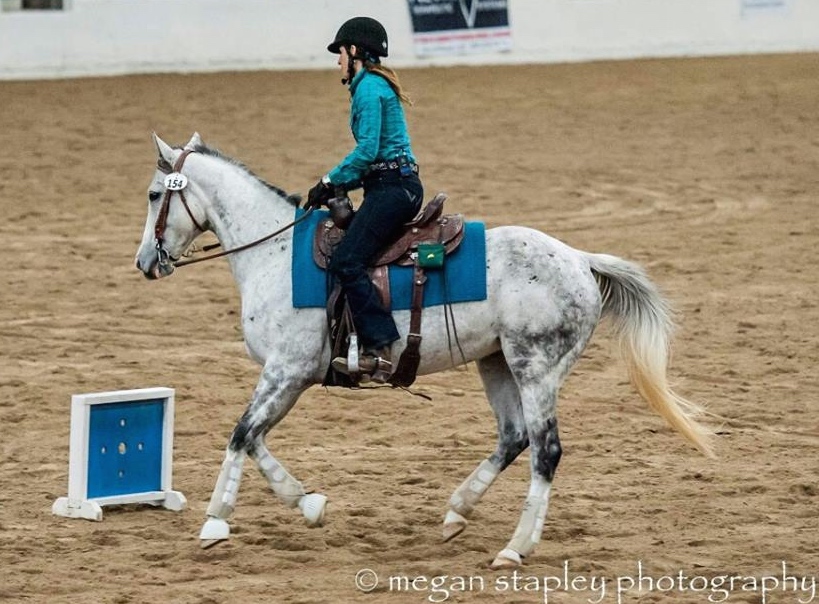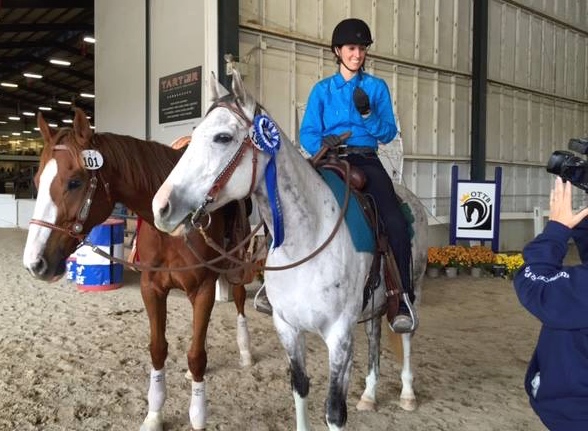
Ontario nurse Lindsey Partridge and her OTTB Soar were named this year’s winners of America’s Most Wanted after intense competition in Kentucky.
Lindsey Partridge and her Thoroughbreds were said to be “the train nobody saw coming.”
After winning the highest honors at the TCA Thoroughbred Makeover in Kentucky this past weekend, the Ontario nurse and her two spontaneously purchased OTTBs— Soar and Lionofwallstreet—returned to Canada after a weekend spent wowing Thoroughbred fans with Freestyle routines that helped proved that an off-track Thoroughbred can do just about anything.
Her gray mare Soar, who she renamed Kahleesi, was named America’s Most Wanted Thoroughbred, after putting in a routine that included a demonstration of bridleless riding and a range of gaits and skills.
Soar
New name:Kahleesi
Sire: Trajectory
Dam: Pyrenee
Foal date: Jan. 31, 2007
Earnings: $86,626 in 45 startsThough the mare flew under the radar and was not widely known prior to her performance at competitive trail riding and the Freestyle, she quickly caught the attention of judges who ultimately determined that she, above the nearly 200 other competitors, was among the very best.
“She’s a horse anybody can ride,” Partridge says. “She could have been anybody’s most wanted Thoroughbred. Kids can ride her. And she can do anything.”
In this week’s Clubhouse Q&A, Partridge discusses her training process, which started with two stranger OTTBs (Soar and Lionofwallstreet)—animals she purchased without taking test rides first—and concluded with victories at the Kentucky Horse Park last weekend.
Q: Why didn’t you take a test ride on your two OTTBs before you bought them?

After Soar performed two Freestyles that demonstrated a range of skills, it was the mare’s ride-ability that made her most worthy of the title. Photo by Megan Stapley
The way I train a horse, I build a relationship first, so it doesn’t matter how they act when I meet them. It doesn’t matter if they’re bucky or crazy. As long as they’re not emotionally damaged or dangerous, I can work with any horse because I train them to do whatever they’re comfortable doing. This is how I learned that my chestnut Lionofwallstreet wouldn’t be a good jumper. It took 15 minutes trying to cross a pole on him. It was a huge catastrophe. He also wasn’t super athletic or agile with his feet, so it wasn’t fair to try to do a 3-foot course on him. He was too slow for barrel racing. And he was wormy and emaciated when I got him, with ulcers in his mouth, so doing dressage on him didn’t seem fair either, due to the collection required. He was too sore and tight.
Then I tried working him with obstacles and he just loved it. He got to ride on a loose rein and he was curious about the obstacles and having fun.
Soar, on the other hand, could do it all. If I could have, I would have signed her up for everything (at the Makeover). She could rip around the barrels, do flying changes, counter canters, jumpers—she snaps her knees up so nicely.
I decided to put them in the same classes because it was easier to trailer them to the same event.
Q: Soar really stole the show. Please tell me about that.

Partridge and Soar join the other teammate, Lionofwallstreet, a chestnut OTTB who put in an amazing Freestyle.
The sponsors were watching her all weekend and told me afterwards that they fell in love with her watching her first freestyle. The funny thing is that my freestyle didn’t go as planned. In the first one, I didn’t get my cue before the music started, and the music cut out. In the second one, they played the wrong song, so I ran out of music before I was ready. I’d been so focused on my pattern that I didn’t notice right away that it was the wrong song!
When I realized I was running out of music I took the bridle off and we finished up. Afterwards, everybody got two minutes to talk to the crowd. And I said that she was a horse anybody could ride
Q: You’re actually a jumper rider by training, but on Soar you went Western, doing barrels and bridleless riding. This decision reflects your approach to training.
All of these Thoroughbreds can be like this, that’s the crazy thing. The real key is you have to get the horse’s mind connected to you. You actually need to build a connection to that horse. They need to know that you’re going to be kind to them, but that you’re the leader. Some people rush them, and the horse stops trying. Then there’s the flipside, with people who are too focused on loving their horse, and are afraid to ask too much of them. These riders are fearful their horse won’t love them back. But what a horse needs is a strong leader. If you’re afraid to ask your horse to do a thing, they become afraid of you.
About Lindsey Partridge: This year’s winner of America’s Most Wanted Thoroughbred is a full-time nurse and equestrian. She is a Centered Riding Level 1 coach, a Gold Level Natural Horsemanship coach/trainer, and a Parelli Level 3 graduate and an Equine Canada Rider Level 8. The 30-year-old rider published the book, Natural Horsemanship: Answering the What, Why and How. — Originally published on Oct. 29, 2015.


Love this story. I started late at 45. What does it tell you that I have a OTTB as my old lady’s hunter, who always wins if I don’t screw up, and my backyard trail horse, another OTTB, who is so fun, curious, bomb-proof. I’m now 63, an ok rider, but my boys take care of me. Best horses ever.